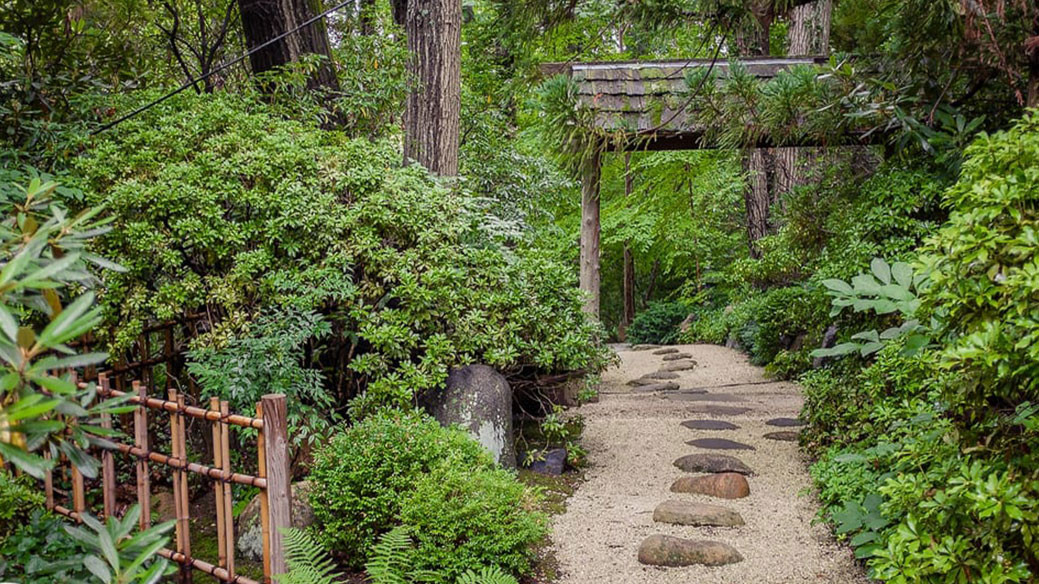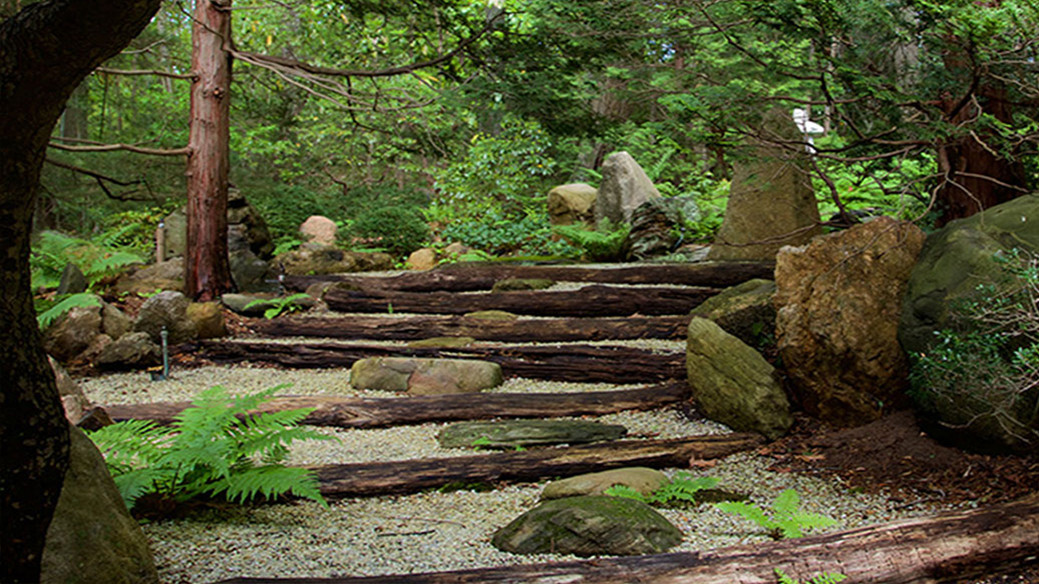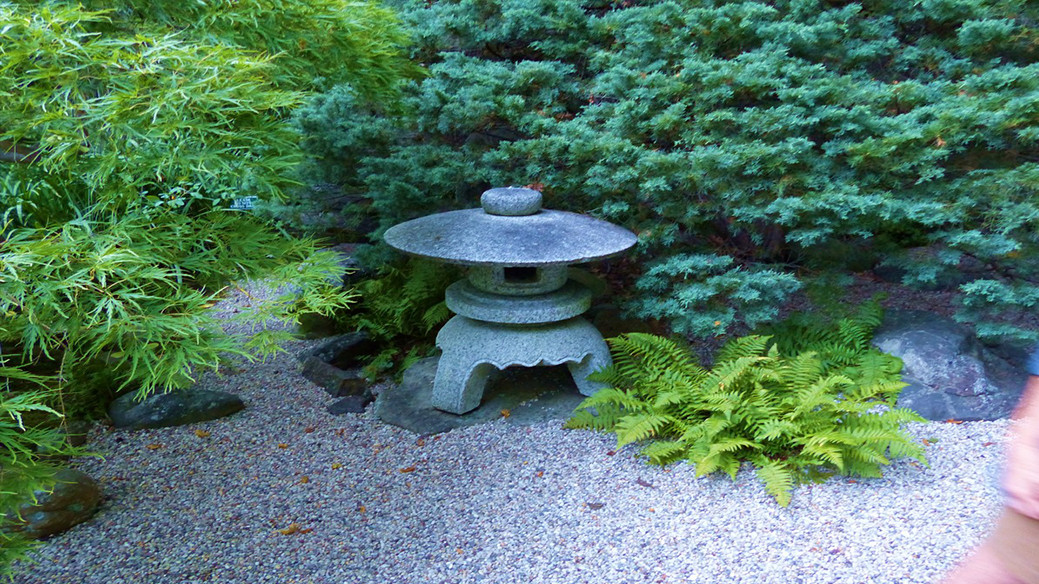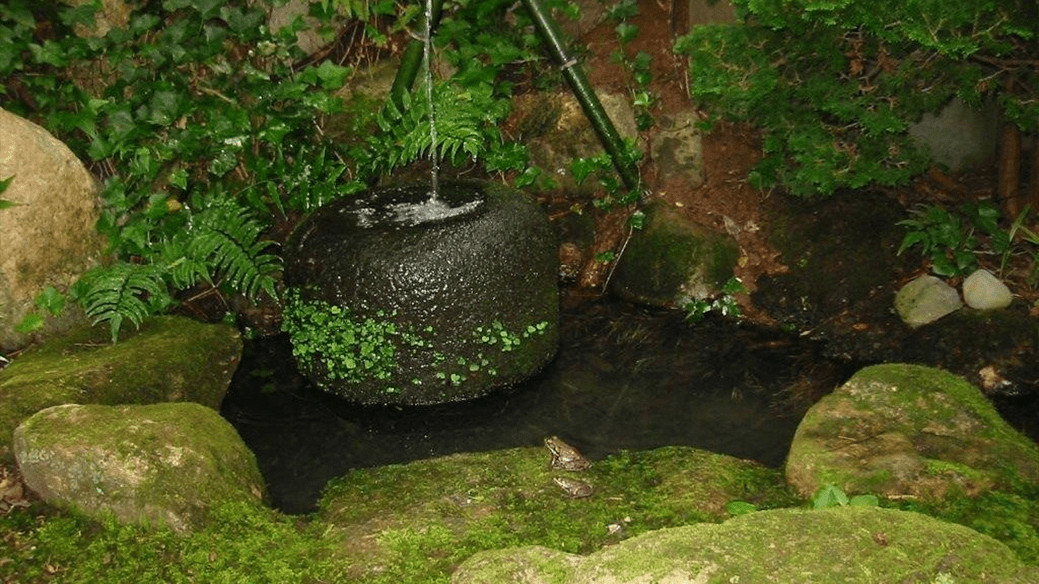Nestled in the heart of Locust Valley, New York, the John P. Humes Japanese Stroll Garden offers a serene escape into a meticulously crafted landscape inspired by Japanese aesthetics. This seven-acre sanctuary is more than just a garden; it’s a journey through nature, designed to evoke a sense of peace and contemplation. Open seasonally, this unique space invites visitors to explore its winding paths, discover hidden features, and immerse themselves in the beauty of carefully curated flora.
 Entrance gate to John P. Humes Japanese Stroll Garden, showcasing natural wood and stone elements.
Entrance gate to John P. Humes Japanese Stroll Garden, showcasing natural wood and stone elements.
A Stroll Through History: The Evolution of the Garden
The story of the John P. Humes Japanese Stroll Garden is one of vision and dedication. Initially conceived by Mr. Humes, the garden began to take shape under his guidance. In 1981, recognizing the potential to create a truly special place, Mr. Humes enlisted the expertise of Stephen Morrell to revitalize and expand the garden, with the intention of sharing its beauty with the public. Morrell’s contributions were significant, adding a welcoming entrance path adorned with Japanese maples and a diverse collection of Asian and native woodland wildflowers. This expansion increased the garden’s accessible area to four acres and introduced captivating elements such as a wisteria arbor, tranquil bamboo groves, and a rocky shoreline feature, further enhancing its Japanese-inspired character.
The garden officially opened its gates to the public in 1986, quickly becoming a cherished local attraction. However, ensuring the long-term preservation of this delicate landscape required more support. In 1993, the Garden Conservancy stepped in to assume management, providing crucial resources and expertise. A significant milestone was achieved in 1997 when a grant from the Japan World Exposition Commemorative Fund enabled the restoration of the garden’s ponds and waterfall, vital features of its design. Furthermore, a new masonry wall was constructed to mitigate noise from the nearby road, enhancing the garden’s peaceful atmosphere.
In 2017, the North Shore Land Alliance acquired the John P. Humes Japanese Stroll Garden from the Humes family. This acquisition was pivotal for preservation, securing the garden’s future and integrating it into a larger conservation effort. This parcel now forms a crucial link in a continuous conservation corridor spanning over 150 acres within the Beaver Brook watershed. This corridor seamlessly connects the Stroll Garden and Humes property to the Shu Swamp Preserve, Upper Francis Pond Preserve, and the two Francis Ponds, creating a significant protected green space.
Key Features of the John P. Humes Japanese Stroll Garden: A Meditative Landscape
The design of the John P. Humes Japanese Stroll Garden is rooted in Japanese aesthetic principles, aiming to create a harmonious balance between views, textures, and compositional elements. The garden is conceived as an idealized landscape, drawing inspiration from a mountain setting by the sea. Visitors are invited to immerse themselves in this carefully constructed environment, designed to promote a meditative and contemplative experience.
A defining characteristic of the garden is its stepping stone path (Tobi ishi). Inspired by the intimate trails found in mountain landscapes, this path guides visitors through a deliberate sequence of views and experiences. The stepping stones dictate the pace of exploration, encouraging a slower, more mindful way of moving through the garden and fully appreciating each vista. The path meanders through twists and turns, leading you on a journey of discovery.
 Stone stepping path winding through lush greenery in the John P. Humes Japanese Stroll Garden.
Stone stepping path winding through lush greenery in the John P. Humes Japanese Stroll Garden.
The path ascends gently through a woodland section, culminating at a “mountain peak,” a high point within the garden offering a change in perspective. From this vantage point, a gravel path, symbolizing a mountain stream, guides you downwards towards an authentic pondside Tea House (Cha-shitsu).
The Tranquil Tea House and Garden
The Tea House is designed as a secluded haven, a “quiet retreat from worldly problems.” Reflecting the principles of a traditional tea garden (roji), the surrounding landscape is planted primarily with evergreen species. This intentional plant selection creates a subdued and tranquil atmosphere, enhancing the sense of peace and serenity associated with the tea ceremony and the garden itself. The Tea House and its garden area offer a space for quiet contemplation and appreciation of minimalist beauty.
The Symbolic Pond
The pond is a central element in the idealized landscape, representing the sea in the garden’s mountain-by-the-sea theme. Gravel paths, acting as symbolic mountain streams, appear to feed the pond, suggesting a natural water source flowing from higher elevations. These gravel pathways create visual interest and guide the eye through the landscape. Symbolic waterfalls are incorporated into the design, further emphasizing the mountain stream concept and adding dynamic elements to the water features. The pond itself serves as the culmination of these streams, representing the ocean and completing the garden’s narrative.
Stone Lanterns: Guiding Lights
 Stone lantern partially hidden among foliage in the John P. Humes Japanese Stroll Garden.
Stone lantern partially hidden among foliage in the John P. Humes Japanese Stroll Garden.
Stone lanterns are strategically placed throughout the garden, serving both practical and aesthetic purposes. Historically used to provide soft illumination in the evening, they now function primarily as architectural ornaments. Their presence adds a touch of traditional Japanese design and creates pleasing visual contrasts with the natural elements of the garden. The lanterns are carefully positioned to enhance the overall composition and contribute to the garden’s tranquil ambiance.
The Ritual of the Stone Water Basin (Tsukubai)
 Close-up of a stone water basin with bamboo pipe in the John P. Humes Japanese Stroll Garden.
Close-up of a stone water basin with bamboo pipe in the John P. Humes Japanese Stroll Garden.
The stone water basin (Tsukubai) is another significant feature, particularly associated with the Tea House. It provides a designated space for guests to perform a ritual cleansing before entering the Tea House. This act of rinsing hands and mouth symbolizes the purification of body and mind, preparing visitors to enter the serene and contemplative space of the Tea House with a refreshed spirit.
Plan Your Visit to the John P. Humes Japanese Stroll Garden
The John P. Humes Japanese Stroll Garden is located on Dogwood Lane in Mill Neck, easily accessible within Locust Valley. Parking is conveniently available on-site. The garden welcomes visitors seasonally, and for the 2024 season, it is open from Saturday, May 4th, until October 27th. Garden hours are Saturdays from 10:00 am to 2:00 pm and Sundays from 1:00 pm to 5:00 pm.
Visiting the John P. Humes Japanese Stroll Garden offers a unique opportunity to experience a meticulously designed Japanese landscape, promoting tranquility and appreciation for natural beauty. It’s a perfect destination for those seeking a peaceful retreat and a moment of connection with nature.
To support the preservation of this beautiful space, consider becoming a Friend of the John P. Humes Japanese Stroll Garden through the North Shore Land Alliance. And if you share your visit on social media, don’t forget to tag #LandAlliancePreserve on Facebook and Instagram!

